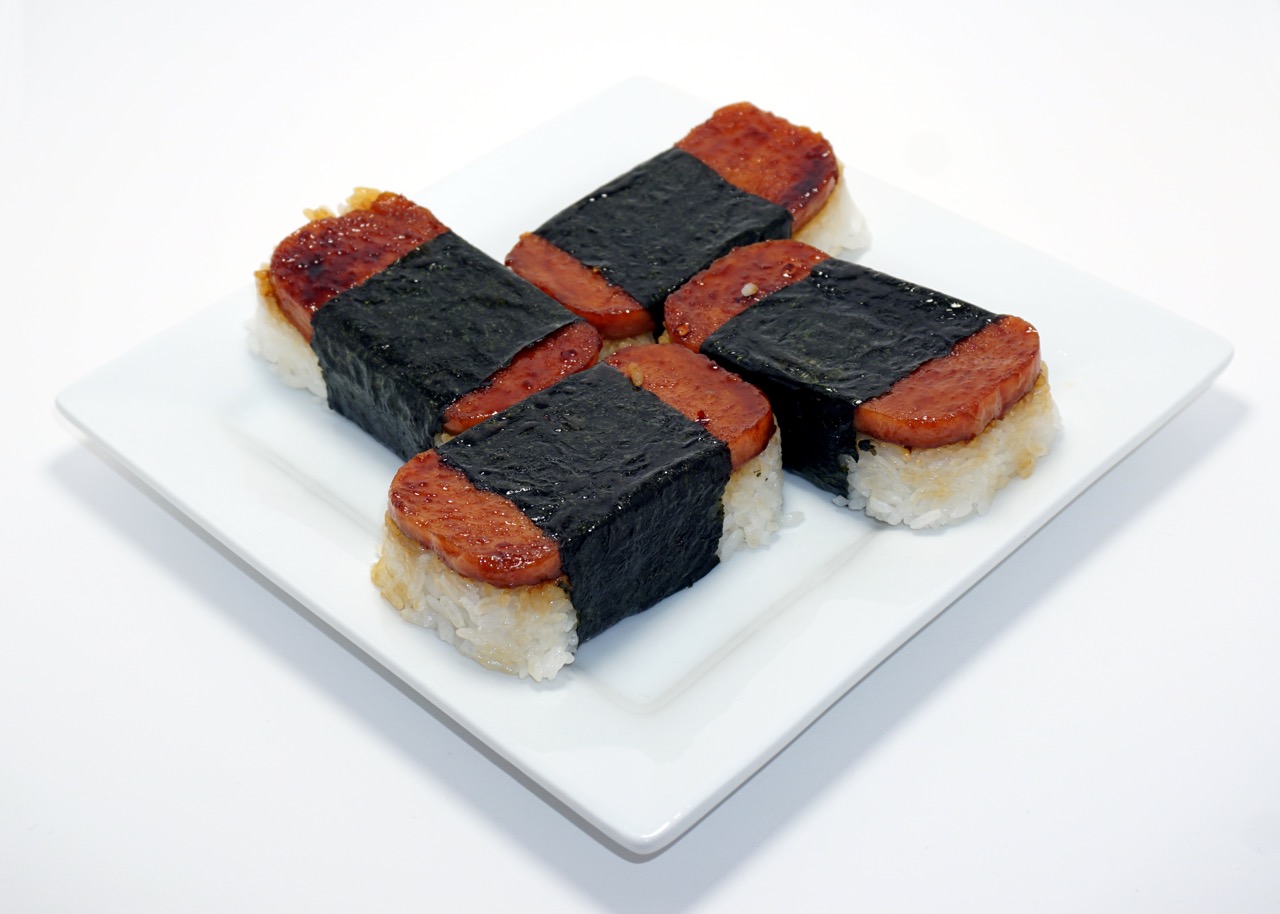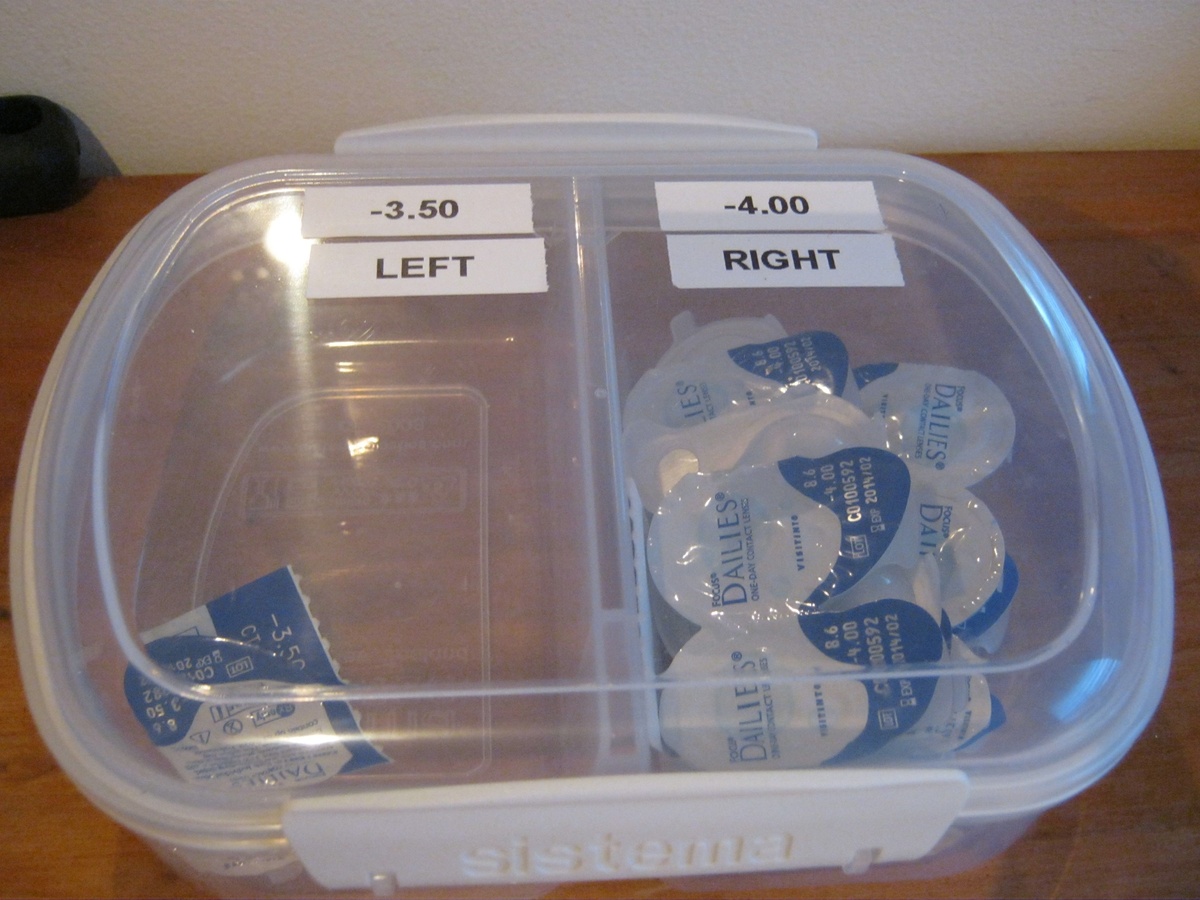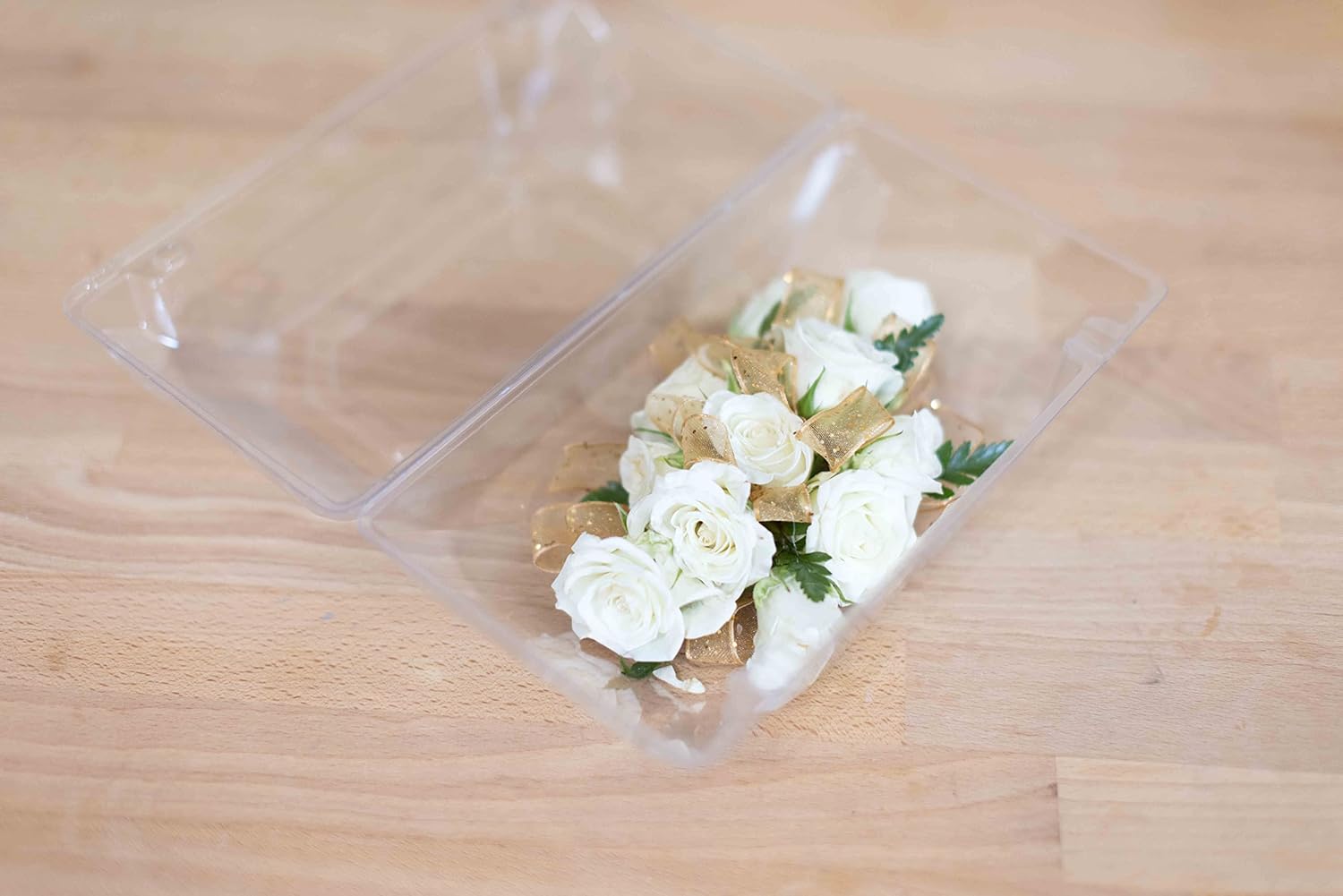

Articles
How To Store Musubi
Modified: February 19, 2024
Learn the best methods for storing musubi with our informative articles. Discover tips and tricks to keep your musubi fresh and delicious for longer periods.
(Many of the links in this article redirect to a specific reviewed product. Your purchase of these products through affiliate links helps to generate commission for Storables.com, at no extra cost. Learn more)
Introduction
Welcome to the world of musubi, a traditional and popular Hawaiian snack that combines the goodness of sushi with the convenience of a handheld treat. Musubi consists of a block of seasoned rice topped with a slice of grilled Spam, but it can also include other fillings like teriyaki chicken or marinated tofu. Whether you’re a musubi enthusiast or a newcomer to this delicious delicacy, it’s essential to know how to store musubi properly to maintain its flavor, texture, and freshness.
In this article, we will guide you through the process of choosing the right container, preparing and storing musubi, and even share some tips to help you preserve its freshness. So, let’s dive in and discover the secrets to storing musubi like a pro!
Key Takeaways:
- Properly storing musubi is crucial for preserving its flavor and texture. Choose the right container, refrigerate for short-term storage, freeze for longer periods, and package it securely for on-the-go enjoyment.
- To maintain musubi’s freshness, use fresh ingredients, avoid excessive moisture, prevent air exposure, and plan consumption accordingly. Properly storing, packaging, and reheating musubi ensures a delightful eating experience.
Read more: How To Store Spam Musubi
Choosing the Right Container
When it comes to storing musubi, selecting the right container is crucial to maintain its shape and prevent it from getting squished or losing its freshness. Here are a few options to consider:
- Bento Box: A traditional Japanese bento box is an excellent choice for storing musubi. These boxes feature compartments that allow for easy organization and prevent the musubi from coming into contact with other foods. Look for a bento box with a tight-fitting lid to seal in the flavors and prevent any leakage.
- Airtight Plastic Containers: If you don’t have a bento box, airtight plastic containers are a practical alternative. Look for containers that are the right size to accommodate the musubi without squeezing it. Choose containers with sturdy latches or silicone seals to maintain the freshness.
- Paper Wrapped: Another option is to wrap the musubi in plastic wrap or parchment paper. This method works well for short-term storage or if you’re planning to consume the musubi within a few hours. Keep in mind that this method may not provide the best protection against external elements or keep the musubi fresh for an extended period.
- Vacuum Sealer: For those who are serious about extending the shelf life of their musubi, investing in a vacuum sealer can be a game-changer. Vacuum-sealed bags remove all the air from the package, effectively preventing spoilage and freezer burn. This method is ideal for long-term storage or if you plan to transport musubi for a picnic or road trip.
Consider your storage needs, transportation plans, and the duration for which you intend to store the musubi when choosing the right container.
Preparing the Musubi
Before storing musubi, it’s important to ensure it is prepared correctly to maintain its taste and quality. Here are some steps to follow when preparing musubi:
- Cooking the Rice: Musubi starts with a base of perfectly cooked rice. Use short-grain Japanese rice for the best results. Rinse the rice thoroughly until the water runs clear, then cook it according to the package instructions or using a rice cooker. Once cooked, spread the rice on a large tray to cool slightly before seasoning it.
- Seasoning the Rice: To add flavor to the musubi, season the cooked rice with a mixture of rice vinegar, sugar, and salt. Gently fold the seasoning mixture into the rice, being careful not to crush the grains. Allow the rice to cool completely before starting the assembly process.
- Grilling the Spam: If you’re using Spam as a filling, it’s important to grill it before adding it to the musubi. Slice the Spam into thin slices and cook them in a lightly greased skillet over medium heat until they are nicely browned and crispy on both sides. Let the grilled Spam cool before assembling the musubi.
- Assembly: Now it’s time to bring all the components together. Lay a sheet of nori (seaweed) on a clean surface, place a musubi mold or a plastic wrap-lined can in the center of the nori, and press a layer of seasoned rice into the mold, ensuring it is evenly distributed. Add the grilled Spam or your preferred filling on top of the rice, followed by another layer of rice, pressing it down gently. Carefully remove the mold, wrap the nori around the musubi, and seal the edges by wetting them slightly with water.
By following these steps, you’ll ensure that the musubi is prepared properly and ready to be stored and enjoyed.
Storing the Musubi
Once you have prepared your musubi, it’s time to store it properly to maintain its freshness and taste. Here are some options for storing your musubi:
Refrigeration:
For short-term storage (up to 24 hours), you can keep the musubi in the refrigerator. Place the musubi in an airtight container or wrap it in plastic wrap to prevent it from drying out. Avoid storing the musubi directly next to strong-smelling foods to prevent any flavor transfer.
Freezing:
If you want to store musubi for a longer period (up to one month), freezing is the best option. Wrap the musubi tightly in plastic wrap or place it in a freezer-safe bag. If you have a vacuum sealer, use it to remove any excess air and ensure the best preservation. Label the package with the date for easy reference. To thaw, simply remove the musubi from the freezer and let it defrost in the refrigerator overnight before consuming.
Packaging for On-the-go:
If you plan to take musubi with you on the go or for a picnic, it’s essential to package it properly to keep it fresh and secure. Place the musubi in a small zip-top bag or wrap it tightly in plastic wrap. You can also use foil or parchment paper to wrap it for added protection. Ensure it is kept upright in a sturdy container or lunchbox to prevent any squishing or damage during transportation.
Remember to always store musubi away from direct sunlight and heat sources to maintain its taste and texture. Additionally, try to consume refrigerated musubi within 24 hours and frozen musubi within one month for the best quality.
By following these storage methods, you can ensure that your musubi retains its delicious flavors and remains enjoyable to eat, whether it’s for a quick snack or a special occasion.
Refrigeration
Refrigeration is a common and convenient storage method for musubi, especially if you plan to consume it within a day or two. Here are some tips for refrigerating musubi:
1. Airtight Container:
When refrigerating musubi, it is crucial to store it in an airtight container to prevent moisture loss and maintain its freshness. Use a container that is the right size to accommodate the musubi without squishing it. Ensure that the container has a tight-fitting lid to seal in the flavors and prevent any leakage.
2. Single-layer Storage:
If you are stacking multiple musubi, it is best to separate them with parchment paper or plastic wrap to prevent them from sticking together or becoming mushy.
3. Proper Placement:
Place the container with the musubi on a shelf or in a designated area in the refrigerator where it will not be disturbed or crushed. Avoid storing it next to strong-smelling foods to prevent any flavor transfer. It is also recommended to keep it away from foods that may release excess moisture, as this can affect the texture of the musubi.
4. Quick Consumption:
Refrigerated musubi is best consumed within 24 hours to ensure optimal taste and texture. The longer it sits in the refrigerator, the higher the chance of it becoming dry or losing its freshness. If you have any leftovers, consider freezing them for longer storage.
5. Reheating:
If you prefer to enjoy your musubi warm or at room temperature, you can briefly heat it up before consuming. Remove the musubi from the refrigerator and let it sit at room temperature for a few minutes to take off the chill. Alternatively, you can microwave it for 15-20 seconds to warm it slightly. Be careful not to overheat as it can make the rice too soft or the seaweed wrapper soggy.
By following these guidelines, you can refrigerate musubi properly, keeping it fresh and ready to enjoy for a short period. Refrigeration is an excellent option for those who want to have musubi readily available for a quick snack or meal.
To store musubi, wrap each piece individually in plastic wrap to keep it fresh and prevent it from drying out. Then, place the wrapped musubi in an airtight container or resealable plastic bag before refrigerating. This will help maintain its flavor and texture.
Read more: How To Store Spam Musubi Overnight
Freezing
Freezing musubi is a fantastic option for longer-term storage, allowing you to enjoy this delicious treat whenever you’re in the mood for it. Here are some tips for freezing musubi:
1. Proper Packaging:
Before freezing musubi, it’s important to package it properly to prevent freezer burn and maintain its taste and texture. Wrap each musubi tightly in plastic wrap or place them in individual freezer-safe bags. For even better preservation, you can use a vacuum sealer to remove any excess air from the packaging.
2. Labeling and Dating:
Remember to label each package with the date of freezing. This will help you keep track of how long it has been stored and ensure you consume it within the recommended storage time.
3. Freezer Placement:
Place the packaged musubi in a single layer in the freezer to allow for even freezing. Avoid stacking or overcrowding them, as this can cause them to lose their shape or stick together. Once they are frozen solid, you can stack them for more efficient storage if needed.
4. Thawing:
When you’re ready to enjoy the frozen musubi, remove the desired amount from the freezer and let it thaw in the refrigerator overnight. Thawing slowly in the refrigerator helps maintain the texture and taste of the musubi. Avoid thawing at room temperature, as this can lead to condensation and affect the quality of the rice and seaweed.
5. Reheating:
Once thawed, you can choose whether to enjoy your musubi cold or warm it up. If you prefer it warm, you can heat it in the microwave for around 30 seconds or briefly pan fry it to crisp up the seaweed and warm the filling.
Remember that frozen musubi is best consumed within one month to ensure optimal quality. The longer it stays in the freezer, the more the texture and taste may degrade.
Freezing musubi is a great way to have a stash of this delicious treat on hand whenever the craving strikes. Whether you freeze homemade musubi or store-bought varieties, following these freezing guidelines will help ensure that they remain fresh and flavorful.
Packaging for On-the-go
When you’re on-the-go and want to bring musubi along for a picnic, road trip, or as a quick snack, it’s essential to package it properly. Here are some tips for packaging musubi for on-the-go:
1. Zip-Top Bags:
One of the simplest and most convenient ways to pack musubi is by using small zip-top bags. Place the musubi inside the bag and seal it tightly to prevent any air from entering. This method keeps the musubi compact and secure, making it easy to carry and eat while you’re on the move.
2. Plastic Wrap or Parchment Paper:
Wrapping musubi in plastic wrap or parchment paper is another option for on-the-go packaging. Simply wrap the musubi tightly, ensuring it is fully covered and sealed. This method provides a protective barrier and helps keep the musubi fresh and intact.
3. Foil:
Using aluminum foil is a great choice if you want extra protection and insulation for your musubi. Wrap the musubi tightly in foil, ensuring no openings or gaps. The foil helps maintain its temperature and protects it from outside elements, making it a suitable option for longer journeys or outdoor activities.
4. Sturdy Container:
If you want a more durable and reusable option, consider using a sturdy container or lunchbox specifically designed for transporting food. Look for a container with dividers or sections to keep the musubi separate from other items and prevent it from getting crushed.
5. Proper Placement:
Once you have packaged the musubi, place it upright in your bag or container to minimize the chance of it becoming squished. If possible, keep the container on a level surface to maintain its shape. Avoid placing heavy items on top of the musubi to prevent any damage during transportation.
Remember to bring along some condiments or sauces if you enjoy them with your musubi, such as soy sauce or teriyaki sauce, packed separately to prevent any leakage or spills.
By using the right packaging method, you can ensure that your musubi remains fresh, intact, and ready to enjoy wherever your adventures take you.
Tips for Preserving Freshness
To ensure that your musubi stays fresh and delicious for as long as possible, here are some helpful tips to follow:
1. Store in a Cool Place:
Avoid exposing musubi to direct sunlight or heat sources as this can cause it to spoil or become soggy. Instead, keep it in a cool place, such as a refrigerator or insulated bag, to maintain its freshness.
2. Use Fresh Ingredients:
The freshness of the ingredients used in musubi directly affects its overall taste and quality. Use fresh short-grain Japanese rice, high-quality seaweed, and fillings that are not past their expiration date. Fresh ingredients will enhance the flavor and ensure a more enjoyable eating experience.
3. Avoid Excessive Moisture:
Moisture can affect the texture of musubi, making it soggy. When storing or packaging musubi, make sure the ingredients, especially the rice, are cooled and dry to minimize moisture build-up. Additionally, avoid storing musubi next to foods that release excess moisture, such as fresh fruits or vegetables.
4. Prevent Air Exposure:
Air exposure can lead to the oxidation of the rice and seaweed, affecting their texture and taste. Ensure that you wrap or package musubi tightly, removing as much air as possible, to maintain its freshness. Using airtight containers or vacuum-sealed bags will help protect against air exposure.
5. Separate Fillings from Rice:
If you’re planning to store musubi for a longer period, consider keeping the fillings separate from the rice until you’re ready to eat. Store the rice and fillings in separate airtight containers or bags and assemble them just before consuming. This will help maintain the crispness of the fillings and prevent them from making the rice soggy.
6. Plan Consumption Accordingly:
To fully enjoy the freshness of musubi, try to consume it within a reasonable time frame. If you know you won’t eat it within a day or two, it’s best to freeze it for later enjoyment, rather than letting it sit in the refrigerator for an extended period.
7. Keep Condiments Separate:
If you like to add condiments or sauces to your musubi, such as soy sauce or spicy mayo, it’s best to keep them separate until you’re ready to eat. Add the condiments just before consuming to prevent the musubi from becoming soggy.
By following these tips, you can prolong the freshness of your musubi and savor its delicious flavors whenever you choose to enjoy it.
Conclusion
Properly storing musubi is essential for maintaining its flavor, texture, and overall freshness. Whether you’re making homemade musubi or purchasing it from a store, following the right storage techniques will ensure that you can enjoy this delightful Hawaiian snack whenever you want.
Choosing the right container, such as a bento box or airtight plastic container, will keep your musubi intact and protect it from getting squished. Refrigeration is suitable for short-term storage, while freezing is ideal for longer periods. Proper packaging, whether using zip-top bags, plastic wrap, foil, or sturdy containers, helps preserve the musubi while on-the-go.
Preparing the musubi correctly, from cooking and seasoning the rice to grilling the fillings, contributes to its overall taste and quality. Following the assembly process carefully ensures that each musubi is well-formed and ready to be stored.
Remember to store musubi in cool places, avoid excessive moisture, and protect against air exposure to preserve its freshness. Using fresh ingredients and planning consumption accordingly will enhance the overall enjoyment of musubi. Keeping condiments separate until ready to eat and following proper thawing and reheating methods for frozen musubi will ensure the best taste and texture.
In conclusion, with the right knowledge and techniques, you can store musubi properly to maintain its deliciousness. Whether you’re enjoying musubi at home, bringing it on-the-go, or even freezing it for later, these storage methods will help you savor this delightful treat whenever the craving strikes. So, go ahead, make some musubi, store it with care, and indulge in its wonderful flavors!
Frequently Asked Questions about How To Store Musubi
Was this page helpful?
At Storables.com, we guarantee accurate and reliable information. Our content, validated by Expert Board Contributors, is crafted following stringent Editorial Policies. We're committed to providing you with well-researched, expert-backed insights for all your informational needs.















0 thoughts on “How To Store Musubi”